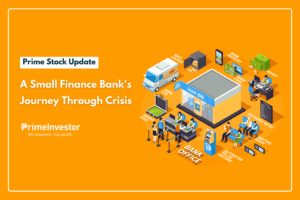Our MF Review Tool is a recommendation tool providing our view on funds. That is – whether a fund is a buy or hold or sell. We do a quarterly review of these views or change them as appropriate. Our first quarterly review is complete and at the end of this report we have highlighted some of the interesting and important changes.
Why we have this tool and how you should use it
Before we move to the changes, we would like to explain our process, philosophy, and objective behind providing this tool.
- The objective of this tool is to help you fulfill a major requirement of portfolio maintenance – which is to ensure good products are kept and bad products are weeded out. When you use this tool to review your funds, you will know when funds are slipping or when they are improving. At a glance, you will know which of your funds you should be keeping an eye on, and which ones you should weed out of your portfolio.
However, portfolio review requires two other important things that you should keep in mind:
-
- Management of asset allocation: that is, how much of your portfolio is in equity, debt, etc. We have touched upon how to manage it yourself in our detailed article (https://www.primeinvestor.in/how-to-invest-for-the-long-term-5-principles-to-keep-in-mind/) – please use that or please consult your advisor in this regard.
- Implementing the recommendations for your specific situation: Specifically, when a fund slips to a ‘Sell’ rating, should you immediately sell it? Answers to such questions will depend on your specific situation (period of holding, tax situation etc). Again, this is a call you should take yourself or speak to your tax auditor about.
The reason for these is that as SEBI-registered research analysts, we are equipped and allowed only to provide our opinion and recommendations on products. Providing advisory and tax consulting services would be beyond our ken or capability.
- This tool is different from ratings: Our buy/hold/sell calls and our ratings are not the same. Some of you raised questions with us that a 2.5 rated fund is a hold in some category and a sell in another category. Yes, it is true because we do not simply go by ratings to give those calls.
Ratings, with all the fine-tuning that we do, can still mask 2 things: any near-term but steadily trending improvement or any emerging risks. Hence there is one more layer of analysis that goes before we provide our calls.
This might involve looking closer at near-term trends and juxtaposing it with the changes in the portfolio or the reason for a portfolio turning around or slipping.
While there is certainly some structure to giving these calls, it is certainly not a cookie-cutter approach. There is enormous thought and debate that goes behind some of these calls that are borderline between a buy and hold or a hold and sell.
We try to do this to the best of our ability, but we can be caught on the wrong foot occasionally. A reasonably structured process reduces the risk but does not eliminate it 😊
Just to sum up this part, this tool simply identifies good funds or slipping funds, sometimes well ahead of market. This is not a job easily done even by advisors because unless one is looking and researching active mutual funds closely, it is very unlikely that such trends can be identified. And if you choose to be with active funds, this is the largest risk you run – of sitting with bad funds!
If you’re wondering how you should then use this tool, here’s how you could:
We understand that this tool might be confusing for you at times, leading some of you to write to us several times before you get clarity. We appreciate your patience and have no doubt you appreciate our painstaking effort to respond to every single question, with limited start-up resources and a small team of high-caliber senior analysts.
We also hope this article would also help you understand where we can help you and where you can help yourself.
We are in the process of making this tool easier, more intuitive, and more nuanced to help answer the valid questions that you may have. While that is on, we’d like to throw more light on how to interpret our buy/hold/sell calls in their present form.
How to interpret our buy/hold/sell calls
Buy
When our review tool gives a buy on a fund that you checked, it means you can continue to hold and invest in it. You need not necessarily have only funds in our Prime Funds list. The ‘buys’ in your portfolio should do as well.
You can dip into Prime Funds when you want to add more funds for diversification or for holding a unique strategy. Please make sure that the fund you invest in is suitable for your time frame.
For example, don’t choose a corporate bond fund for a 6-12-month time frame. Going through our Prime Funds explanations carefully will provide you enough cues on how to use those funds or your own equity funds (that are a buy) in your portfolio.
Hold
When we give a hold call, it means you can hold the fund and avoid fresh investments. A hold simply means we are concerned a bit about performance and are watching it, but performance is not bad enough to warrant a sell. Such funds may eventually move to a sell or even a buy.
If you run SIPs in these funds, then take a call based on the allocation of this fund in your portfolio. If the amount already invested so far in the fund accounts for more than 20-25% of your total portfolio, you can stop the SIP. Restart the SIP in other similar funds you hold that may have a buy recommendation in our tool. Else, pick from the relevant section in Prime Funds.
In other cases, you can continue with the SIP until the SIP period expires; don’t renew the SIP. If you have very few instalments left to complete in the SIP (say 6-8 months), you can allow this to complete regardless of allocations.
Sell
When we provide a sell, it means exit the fund and, of course, stop SIPs. Our views on the funds are entirely based on its performance over time and on our assessment of the portfolios’ near-to-medium term prospects and ability to bounce back. It is not based on the fund’s position in your portfolio.
We look at several quarters of performance before giving sell calls. The call on whether to sell the fund now, or in phases, or whether to wait will be your decision – based on how much the fund accounts for in your portfolio, the tax and exit load that you may suffer. We will be constrained from providing views on the suitability of the call to your situation. Our endeavor in a ‘sell’ call is to simply alert you on poor performance.




6 thoughts on “Quarterly review: Changes to our review recommendations (and how to use our tool)”
Am actually surprised that in the past FT STIP was even considered a ‘Hold’. I think in debt MFs, you may also need to look at portfolio liquidity, concentration and in fact in Credit funds you may need to view them to an extent the way you would look at equity funds.
Mere consistency in returns and higher return should not be the only consideration. Further, you may want to look at expense ratios in debt MFs. Quite a few charge between 1.20-1.70 %, which is quite high.
While these are personal views, would however hasten to add that you guys are doing a pretty good job. Best Wishes to you and the team !!!
Hello sir,
We do everything you mentioned and much more in our analyses 🙂 Our ratings are also designed to address as many risks as possible, based on the category. We look at credit-related risks across all debt categories and even in hybrid debt categories.
Franklin STIP was a hold because its returns were simply unmatched; it had gone through most of the debt issues without big impacts and it usually took several types of covenants to safeguard its interests.
Thanks,
Bhavana
My clarity regarding investments keeps on increasing reading your articles. Thanks for efforts you have made to help us
Thanks, sir!
Regards,
Bhavana
Suppose i am choosing only Passive funds for my portfolio. Do i need this MF review tool still. Because my understanding is , this is only suitable for active funds. Please clarify
All passive funds are not the same. If they were, there wouldn’t be variation even in their ratings or our opinion of buy/sell 🙂 Please check the variety of passive funds and ETFs we suggest and portfolio of passive funds, IF you are a subscriber. You will get to know what it takes to choose and blend a passive portfolio. thanks, Vidya
Comments are closed.